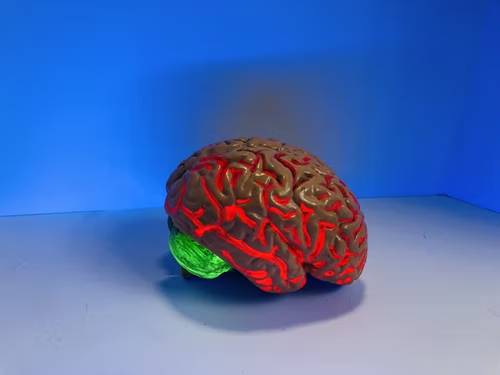
Dementia is an umbrella term for a cluster of brain conditions that influence memory, thinking, and social abilities cruelly enough to obstruct daily life.
Dementia is an umbrella term for a cluster of brain conditions that influence memory, thinking, and social abilities cruelly enough to obstruct daily life. About 50 million people worldwide have dementia, as per the analysis of the World Health Organization, and there are almost 10 million fresh cases each year. There are many diverse conditions under the umbrella expression of dementia, and many various causes of dementia. Doctors use several tests, including brain scans, to assist diagnose and potentially recognize the causes of dementia.
Categories of Dementia and their Effects on the Brain
Alzheimer's disease is the most widespread cause of dementia, according to experts, accounting for 60 to 80 percent of all cases. Researchers are still functioning to determine the exact cause of Alzheimer's disease, but it may be due to an irregular buildup of proteins that spoil cells in the front and sides of the brain. The harm and eventual death of these brain cells, known as neurons, causes the exaggerated areas of the brain to shrink.
Vascular dementia is the second most widespread type; it is the consequence of inadequate blood flow to the brain, a state known as ischemia. This type of dementia can expand as a person ages, or as the consequence of a stroke or plaque buildup in the artery leading to the head.
Dementia with Lewy bodies is the consequence of protein deposits in neurons, which break off the messaging system in the brain as ground symptoms of dementia. Frontotemporal dementia is a group of dementias that concern the front and sides of the brain as a reason behind problems with language and behavior. People with Parkinson's disease often build up symptoms of dementia.
A number of circumstances, such as strokes and tumors, can result in dementia. Brain scans can lend a hand in pinpointing the underlying causes of a patient's dementia. These scans can identify tumors and confirmation of blood clots or bleeds connected with strokes, for example.
Many forms of dementia involve the outer layer of the brain, known as the cortex. Brain scans can illustrate changes to the cortex in ways that can assist doctors to pinpoint the causes of dementia.
Degeneration of the external cortex layer of the brain is frequent in many forms of dementia. This circumstance, recognized as cortical atrophy, may be visible on a brain scan. A strong brain cortex looks quite wrinkled, with steep "valleys" of tissue unraveling ridges of tissue. In those with cortical atrophy, though, the loss of brain cells causes ridges to turn out to be thinner and the valleys to grow wider. As the neurons die, fluid-filled cavities in the center of the brain enlarge to fill the obtainable space, which makes the fluid-filled areas develop much larger than normal. Brain scans can detect and compute these fluid-filled areas to facilitate doctors in diagnosing and assessing dementia.
Brain atrophy, also identified as cerebral atrophy, is a stipulation in which the brain cells get minor in size. Brain atrophy can cause symptoms of dementia in patients with Parkinson's disease; larger tissue shrinkage causes greater cognitive decline.
How Brain Scans in Patients with Dementia Help?
Brain scans can notice changes in brain organization and function associated with Alzheimer's disease and other kinds of dementia.
Computed tomography (CT) scans and magnetic resonance imaging (MRI) are the mainly common types of brain scans. Doctors rely on CT and MRI brain scans when investigating patients with suspected dementia. CT scans create x-ray images of structures within the brain and can show confirmation of strokes and ischemia, brain atrophy, changes to the blood vessels, and other troubles that can bring about dementia. CT scans and MRI scans can show the loss of brain mass connected with Alzheimer's disease and other kinds of dementia.
MRI scans can detect the equivalent problems as CT scans can, but MRI scans are enhanced for identifying some conditions, such as brain atrophy, spoil from minor strokes, or slight patterns of insufficient blood flow of ischemia. A 3 Tesla MRI is an extraordinary type of MRI that uses magnetic fields with double the strength of a usual MRI so that it creates extremely detailed images of the brain in less time. Like established MRIs, 3 Tesla MRIs can help doctors look for signs of stroke, tumors, and other grounds of dementia.









